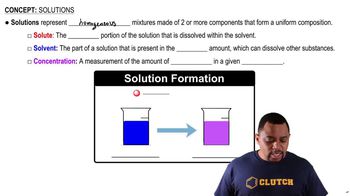If all the solute is dissolved in diagram 1, how would heating or cooling the solution cause each of the following changes?
a. 2 to 3
<IMAGE>
 Verified step by step guidance
Verified step by step guidance Verified video answer for a similar problem:
Verified video answer for a similar problem:


 4:38m
4:38mMaster Solubility: Temperature Effect Concept 1 with a bite sized video explanation from Jules
Start learning